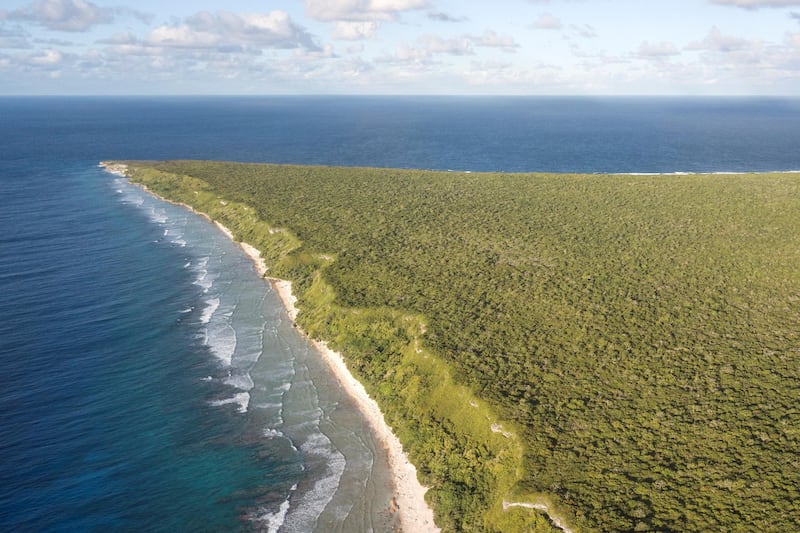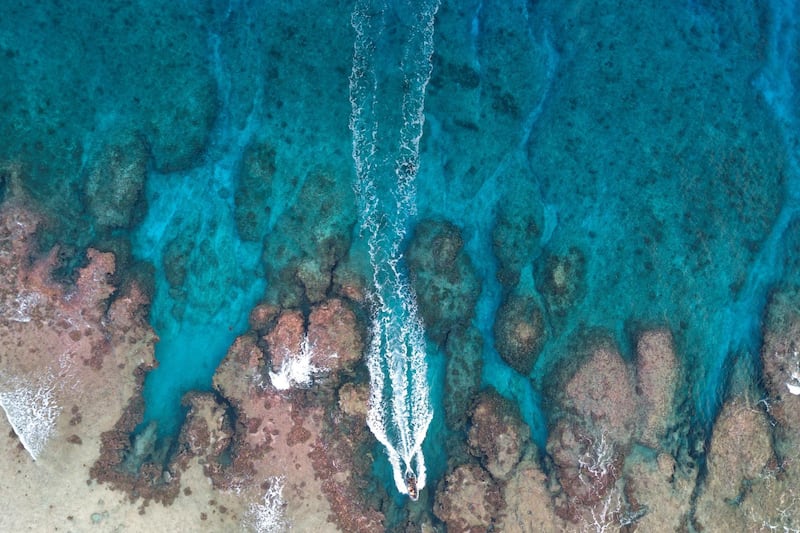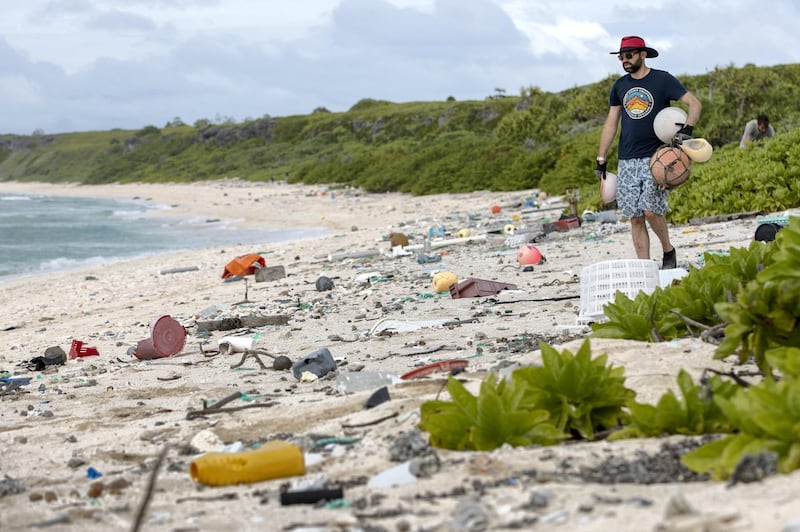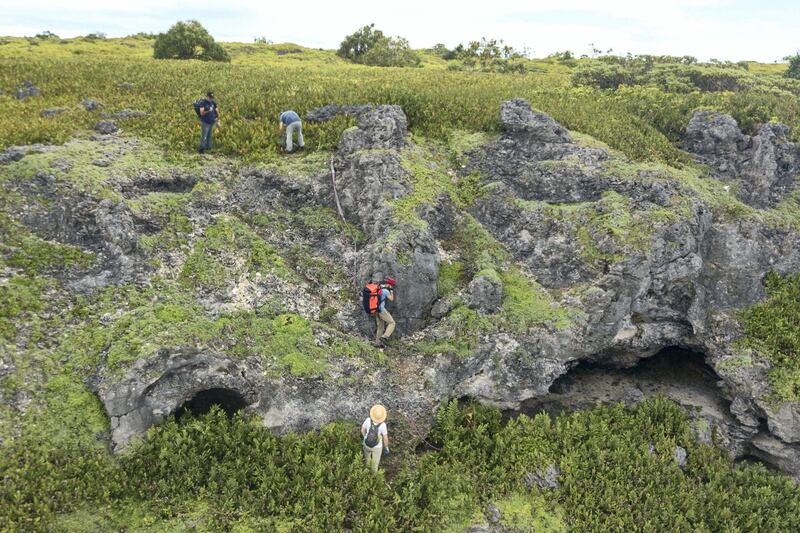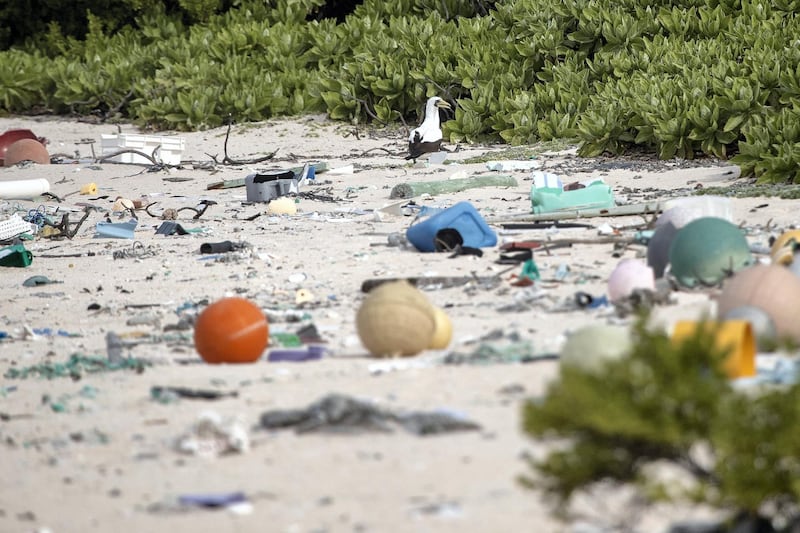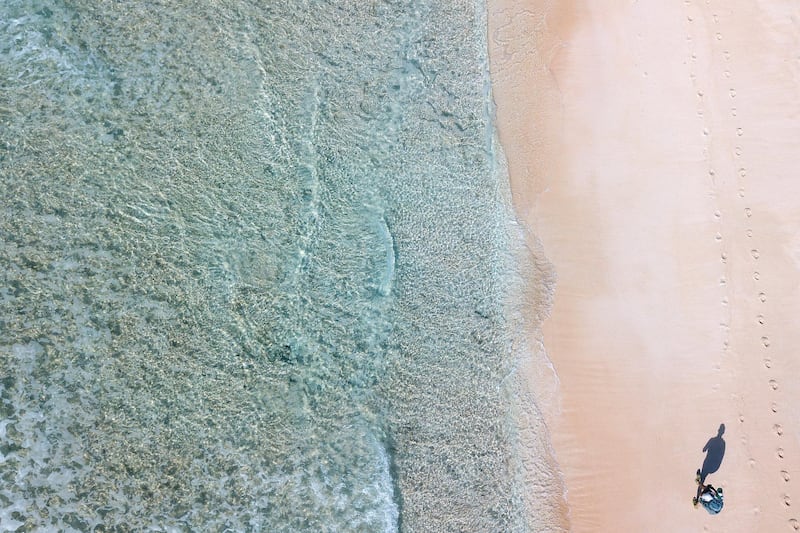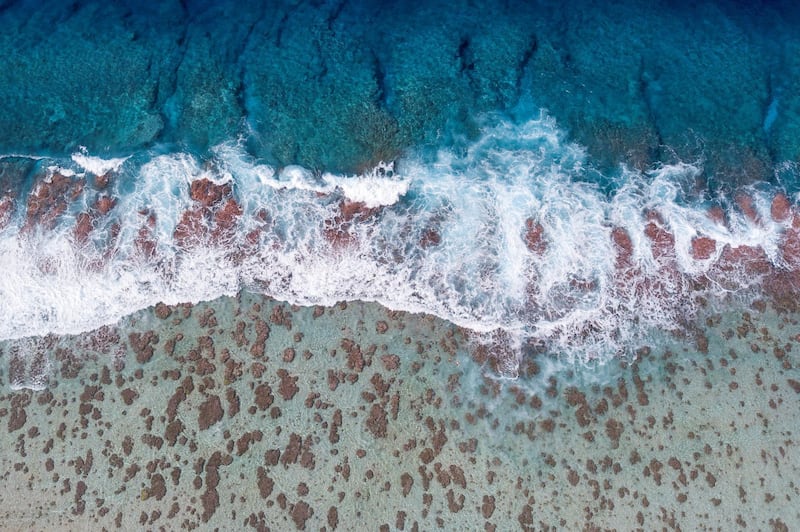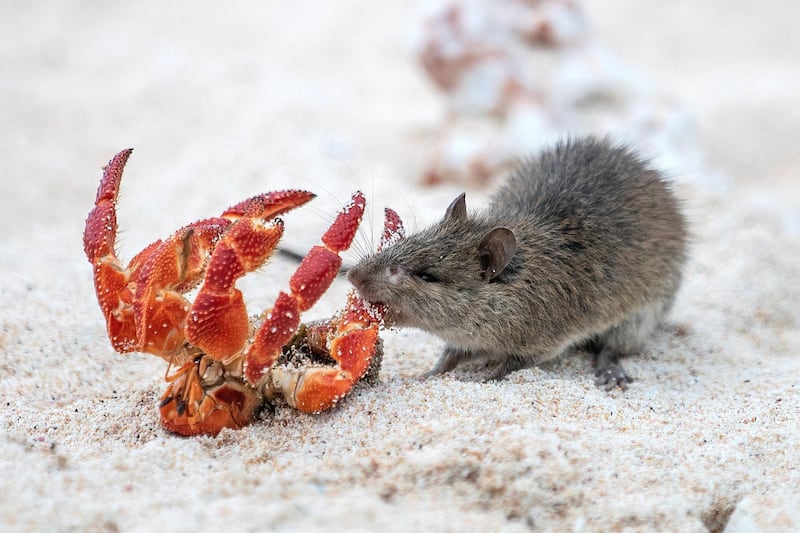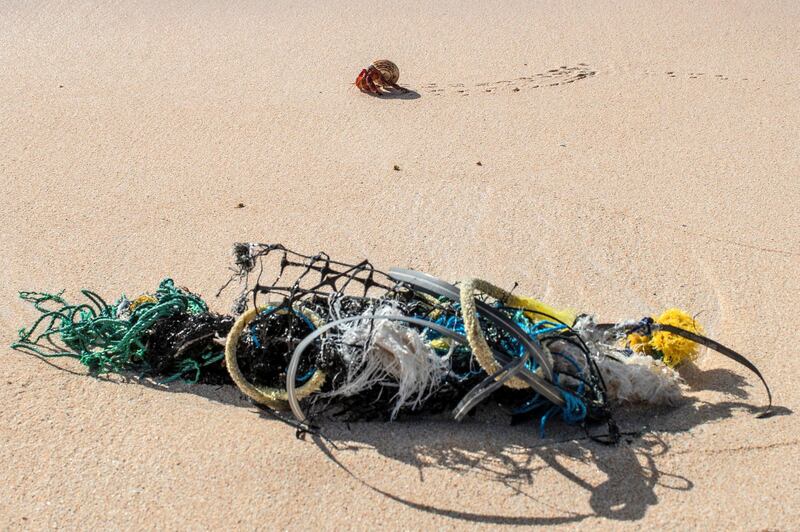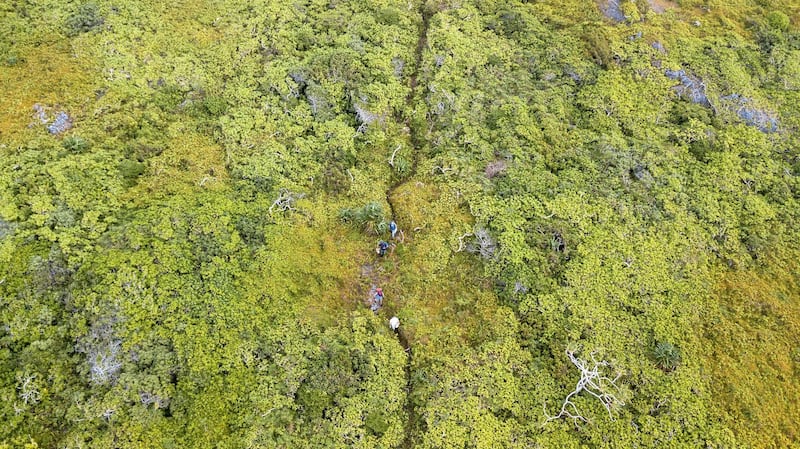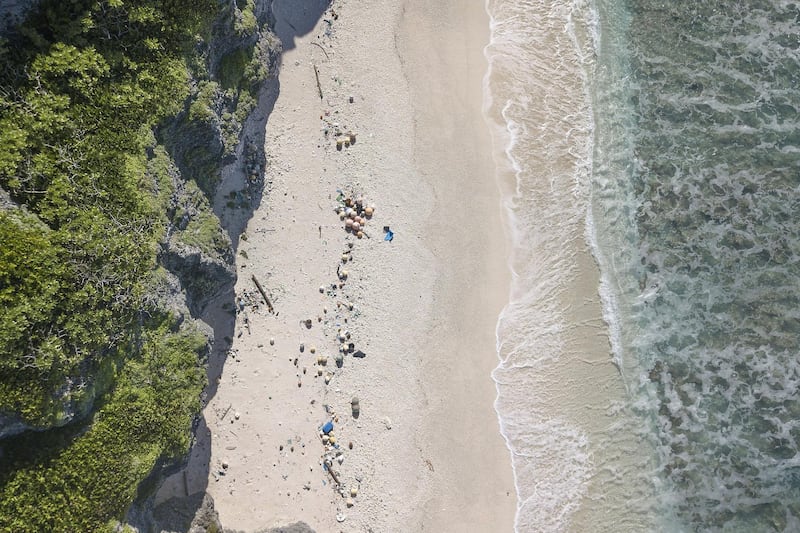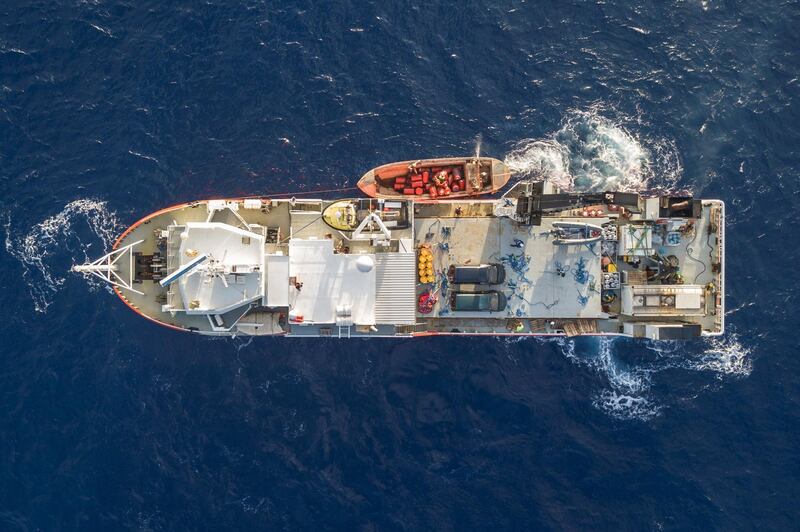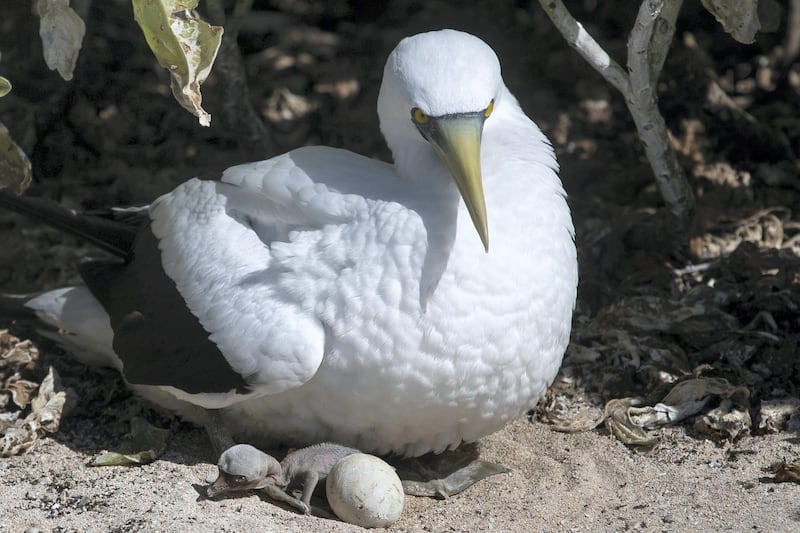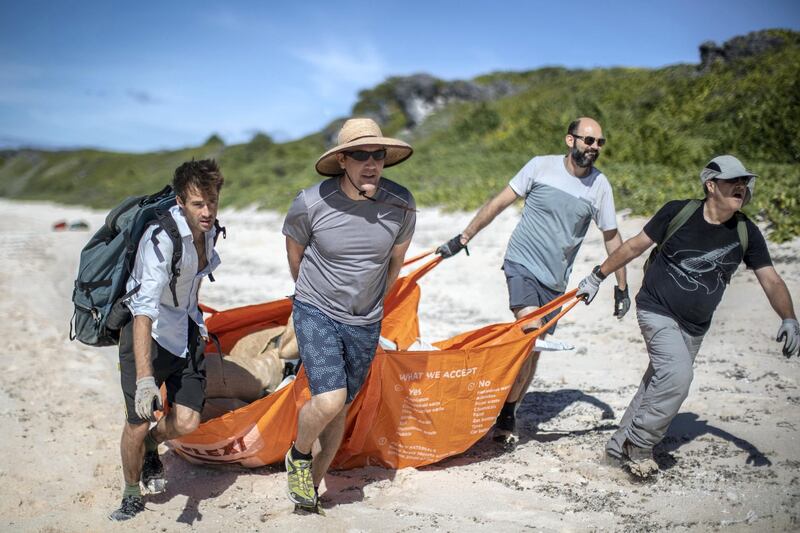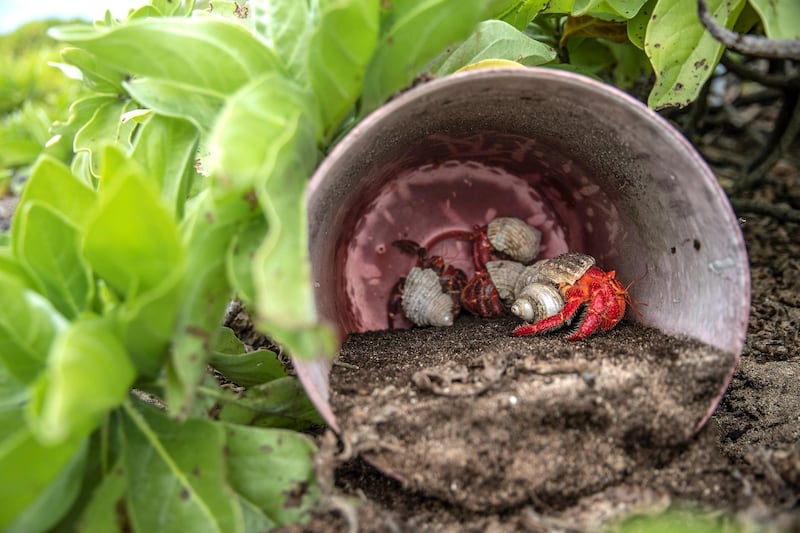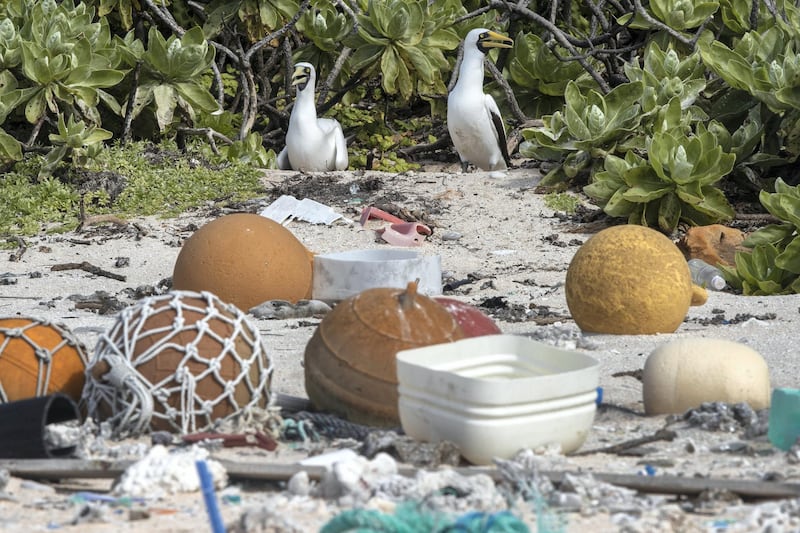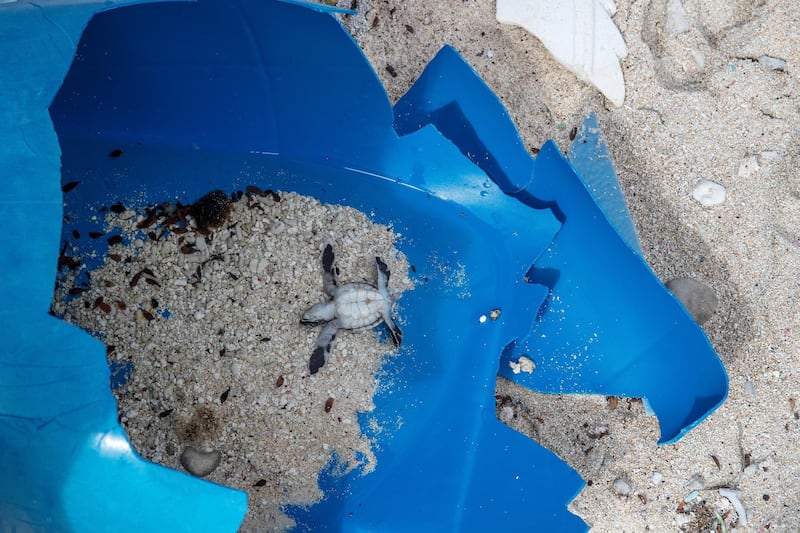Swaying coconut trees, pink-tinged sand beneath the toes and turquoise blue waters breaking over a coral reef. It’s the ultimate get-away fantasy. Until it becomes a terrifying reality.
When our inflatable boat capsized in pounding surf, there was no way off Henderson Island, a Unesco World Heritage site and one of the best remaining examples of an elevated coral atoll ecosystem. We were stranded on an uninhabited paradise, with no food, dressed only in shorts and T-shirts and with limited survival skills.
As the night closed in, and temperatures plummeted, we came dangerously close to hypothermia. Our lifeline was a cigarette lighter, flown across the sea to us, taped to a drone.
The back story
A group of 12 of us had made a six-day journey to the Pitcairn Islands group to study and clean up an enormous expanse of plastic rubbish washed onto Henderson by ocean currents. A 2017 study estimated it has the highest density of plastic debris ever recorded. Over two weeks, photojournalist Iain McGregor and I would document the expedition.
Joining us were divers Jon Slayer and Luke Hosty, who retired from the Royal Marines to make mesmerising documentaries about marine life. Steering the Rib was Jay Warren, a Pitcairn Islander who has spent 40 years navigating the surging seas around these parts.
But an inflatable raft, returning to the expedition ship after dropping us off on the beach, capsized while trying to cross a rocky, coral reef that runs a relentless line around the island. A piece of fishing rope snagged on coral caught in the propeller and a monster wave flipped the Rib like a toy.
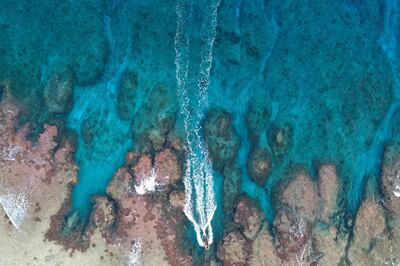
We were stranded, among the trash we were sent to pick up. Rescue was seven days sailing away from Papae'ete. The last humans to be marooned on Henderson were sailors from the doomed whaling ship Essex in 1820. Their plight inspired the novel Moby Dick.
Evening high tide rolled in with an even bigger swell, impossible to cross. We'd be spending the night on the beach – with only a bag of breadsticks and two tins of cola.
With none of us dressed to spend the night without shelter, we needed to make a fire. We had no matches – but we did have two drones, used for filming. So we signalled the expedition ship, using a radio, and asked them to tape a lighter to the drone we sent across half a kilometre of ocean. As the sun went down and the air chilled, it was our lifeline.
A cold, cold night
Henderson’s coastline is cut with caves and caverns, but after disturbing three hefty rats, we decided to sleep on the sand, and began gathering wood for a fire. We scavenged among the plastic debris to make camp. Fishing buoys become seats. Nets made a hammock, keeping Warren off the ground. A twisted mound of fishing rope was a bed, with an inflated life vest a pillow.
Dusk falls swiftly in the South Pacific, and with the inky blue darkness came the cold. At about 9.30pm, I started to shiver uncontrollably, great shudders starting from the centre of my body. Hosty showed us how to "cuddle" for body heat.
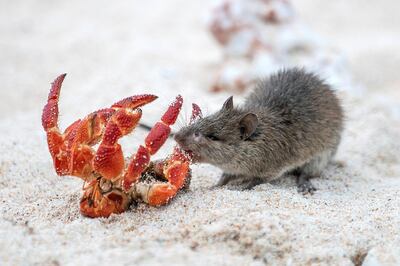
For most of the night, McGregor and I clung to each other, limbs pressed hard together. Over hours – I stopped counting after five – we developed a rhythm: spooning on one side until one of us was warm, then turning over to warm the other, before finally sitting up to the fire. It stopped us slipping off the edge into hypothermia.
As dawn broke, the surf was pounding down on the reef even heavier and louder than the day before. When the tide started to drop, we knew that it was now or never. The Rib was dragged back down the beach and we all counted each wave: five small ones and then three huge, building rollers. We’d be at the mercy of that final wave, with no way to turn back.
Cold, salty spray slapped our faces. The first wave took us up. The engine bounced off the reef and caught for a brief, horrifying second. The next wave threw us high in the air. I gripped the ropes, gasping in terror as the third rose up ahead of us. It was massive, blocking out the sky and the ship ahead.
The motor cracked the reef again, just as we launched forward at a 45-degree angle. Suddenly, we broke through the wave and bounced down onto the deeper, calmer ocean. We made it safely off the island, but the shipwreck threw plans for the expedition into chaos.
The big haul
With an easy leap, sailor Nikita Tkach plunged off the side of his ship into the deep ocean. As he scrambled into an inflatable raft, his disposable, yellow cigarette lighter slipped from his pocket, and was floating on the water. Tkach, 27, dove beneath the waves again, swimming a few feet to retrieve the lighter between his teeth.
It would be the first piece of plastic recovered from Henderson Island on an 11-day clean-up mission. But first, expedition leaders Robin Shackell, British diplomat and the deputy governor of the Pitcairn Islands, and Brett Howell, an American conservationist, had to plot how to get the team there.
A narrow channel was found on the north side of the island. That meant the team would have to endure a gruelling five-km walk through dense vegetation, and on craggy coral. The path started 1.5km from the beach landing, after the group had navigated three headlands, wading through waist-deep water, slippery coral underfoot and scramble up a 30-metre cliff, and down another onto the beach. The journey took an hour and 15 minutes. They would repeat it, twice, every day. Most days they carried food, equipment and litres of water.
The clean-up started with Briggs measuring out a stretch of sand using his running app. The first task was to remove all the fishing buoys from that area, throwing them into a large pile. In total, 1,200 were gathered.
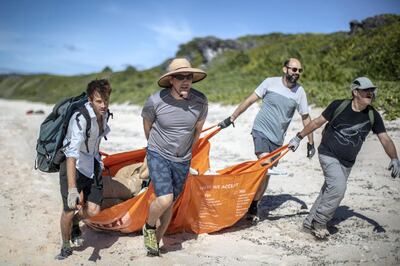
Then they moved onto the larger pieces of rigid plastic. Containers, water bottles, laundry hampers and toilet seats were crammed into sacks. Anything larger than a bottle cap was picked up. The work was back-breaking, sweaty and laborious – a relentless task under the hot sun for up to six hours a day.
“It takes a lot of time on your hands and knees just shuffling through to grab it all,” Howell said. “You certainly feel more impactful when you are going after the buoys and the big stuff because you really see the difference.” Every item was counted, catalogued, weighed and recorded so that scientists can later compare the data with that collected in 2015.
Before the long trek back to the Rib, the team marked the end of each day with a photo. “It is so rewarding to see the progress you make as you move along the beach,” James Beard, a recycling expert from UK company Valpak, said. “You can see that there is a real difference in how the beach looks.”
In total, they worked for more than 350 hours, hiked for 151 hours and gathered six tonnes of rubbish.
Home for a hermit crab
The trash is carried to Henderson on the powerful South Pacific Gyre current. The team found items from all corners of the globe. Spirits (drinks?) bottled in Japan, Scotland and Puerto Rico, a rubber boot manufactured in the Netherlands and a hard hat from an American building yard. They picked up 25 items with bar codes and wording, which will be analysed for provenance. In one 600m stretch of beach, 909 bottle tops were counted.
As well as being unsightly, the litter can be deadly to wildlife, found in the stomachs of dead sea birds and whales or tangled around the corpses of sharks, turtles and dolphins. Hermit crabs make their home in plastic containers. But they can't climb out of the "crabitat" and starve to death. The decaying stench attracts other crabs, who also perish. One pesticide container held the corpses of 500 creatures.
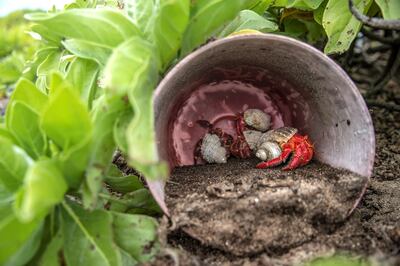
The ghosts of dead fishing gear also litter the beaches of Henderson Island. The clean-up team estimated 60 per cent of what they found appeared to be associated with industrial fishing. About a dozen fish aggregation devices (Fads) were found washed up on the beach, with one cut free from the reef. They are rudimentary rafts with netting that drift as deep as 100m below the surface. A satellite-linked buoy then relays the location to a fishing vessel. Fishermen deploy Fads at sea because valuable catch, such as tuna, shoal beneath them.
It's unsustainable fishing. As well as choking the ocean with huge pieces of debris, the Fads also attract other species such as bigeye tuna, which is overfished in parts of the Pacific. But because fishing is banned in the waters around the Pitcairn Islands group – which is the world's third largest marine protected area – New Zealand police and the British government are now investigating.
Making an impact
Weather and swell patterns didn’t improve over the course of the expedition, and so the clean-up team was forced to leave the collected rubbish on the beach, neatly mustered. It now sits in 13 collection stations, dragged over the high-tide mark and piled up in beach scrub. Another 14 large pieces of plastic were deliberately left on the beach, so that four digital cameras can track what happens to them.
It's expected the same volume of plastic will wash up on the beach within five years. According to Britain's Royal Statistical Society, an estimated eight million tonnes of plastic ends up in our oceans each year. By 2050, we will be producing four times as much plastic as we are now. And on current trends, 40 per cent of that will be used only once.
Shackell and beach clean-up leader, conservationist Howell, are now looking at options to move the rest of the rubbish. The fishing buoys collected from the beach, for example, will be taken to Pitcairn Island and sliced in two, to be used for hydroponic agriculture. Ultimately, the goal is to deliver the rest of the plastic to Costa Rica, where it can be transformed into low-cost housing.
Howell has worked tirelessly to find a solution since he returned to the United States. “If this isn’t a wake-up call that we need to change our global supply chains, get to a circular economy, I don’t know what is,” he says.
Beard is not despondent about leaving the trash behind. “It is part of the story of the actual problem. If you can’t physically take the plastic out of these places where it has accumulated, then I think it speaks volumes for the actual scale of the problem that the world is facing.
“One thing, that’s kind of brought home to me, is that we don’t need a few people doing everything perfectly, we just need a lot of people doing a few changes here and there which will make a real impact.”
